Magnetic Effects of Electric Current – Complete Guide For Class 10 Science Chapter 12
Welcome to iPrep, your Learning Super App. Our learning resources for the chapter, Magnetic Effects of Electric Current in Science for Class 10th are designed to ensure that you grasp this concept with clarity and perfection. Whether studying for an upcoming exam or strengthening your concepts, our engaging animated videos, practice questions and notes offer you the best-integrated learning with interesting explanations and examples.
Understanding the Magnetic Effects of Electric Current is not only crucial for academic success but also for recognizing the underlying principles that power the technology around us. From electric motors that drive household appliances to generators that produce electricity, the concepts discussed in this chapter are at the heart of many innovations. This chapter delves into the intricate relationship between electricity and magnetism, showcasing how electric currents create magnetic fields and how these fields can, in turn, induce electrical currents. By exploring these connections, students will gain valuable insights into how these phenomena shape our modern world and enhance their analytical skills in the field of science.
Introduction to Magnetic Effects of Electric Current
Magnetic effects of electric current refer to the phenomenon where a wire behaves like a magnet when an electric current passes through it. This fundamental concept forms the basis of many devices and technologies we use today.
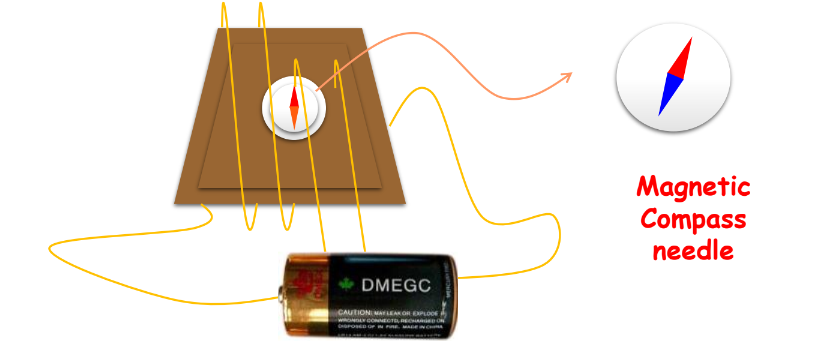
Magnetic Field
A magnetic field is the region surrounding a magnet where the force of the magnet is experienced. The magnetic field has both magnitude and direction, and its strength is greater where the field lines are more crowded.
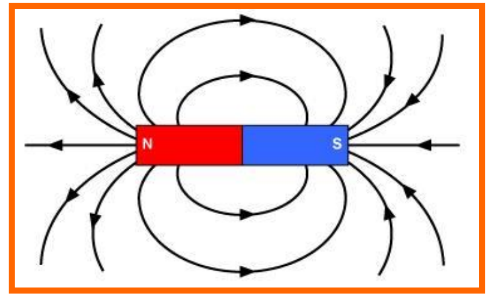
Field Lines
Magnetic field lines are imaginary lines used to represent the magnetic field. By convention, these lines emerge from the north pole of a magnet and merge at the south pole. The strength of the magnetic field is higher when these lines are closer together.
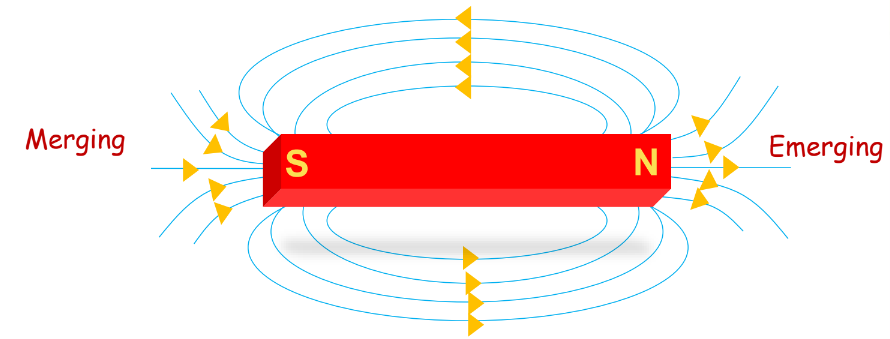
Drawing Magnetic Field Lines with a Compass Needle
To visualize the magnetic field lines around a magnet, a simple experiment can be performed using a small compass and a bar magnet:
- Setup: Place a bar magnet on a sheet of white paper fixed on a drawing board and mark its boundary.
- Marking Points: Place the compass near the north pole of the magnet and mark the positions of the two ends of the needle.
- Tracing the Field Line: Move the needle so that the south pole occupies the position previously held by its north pole, and continue marking points until the south pole of the magnet is reached.
- Drawing the Curve: Join the points marked on the paper by a smooth curve, representing the magnetic field line.
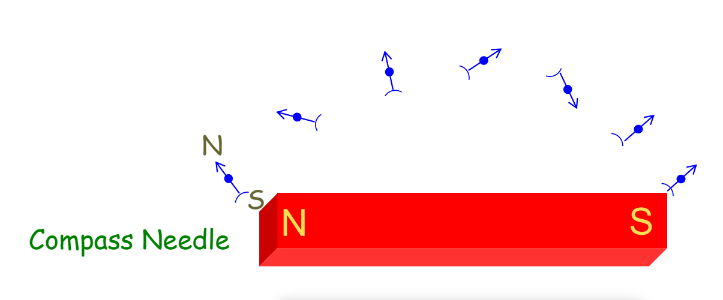
Magnetic Field Due to a Current-Carrying Conductor
A current-carrying conductor generates a magnetic field around it. According to the chapter Magnetic Effects of Electric Current, when a long straight copper wire is connected in series with cells and a plug key, and placed parallel to and over a compass needle:
- Current Direction and Needle Deflection: When current flows from north to south, the compass needle’s north pole moves towards the east. Reversing the current direction causes the needle to move towards the west.
Magnetic Field Around a Straight Conductor
The magnetic field generated by a straight conductor with current forms concentric circles around the conductor. As stated in the chapter Magnetic Effects of Electric Current, The strength of this magnetic field depends on:
- The current flows through the conductor.
- The perpendicular distance between the point and the conductor.
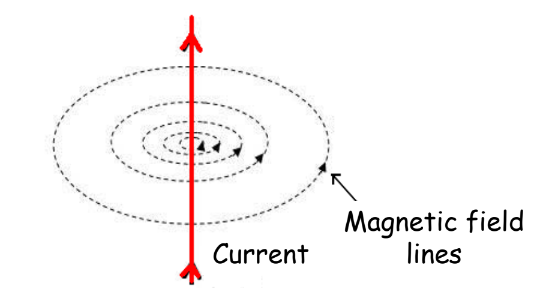
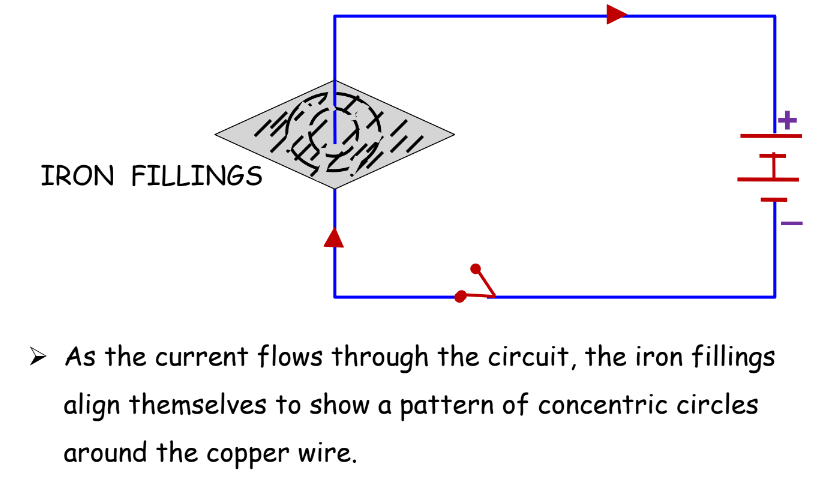
Right-Hand Thumb Rule
To determine the direction of the magnetic field around a current-carrying conductor, use the Right-Hand Thumb Rule:
- Imagine holding the conductor with your right hand such that your thumb points in the direction of the current. The direction in which your fingers wrap around the conductor is the direction of the magnetic field lines.
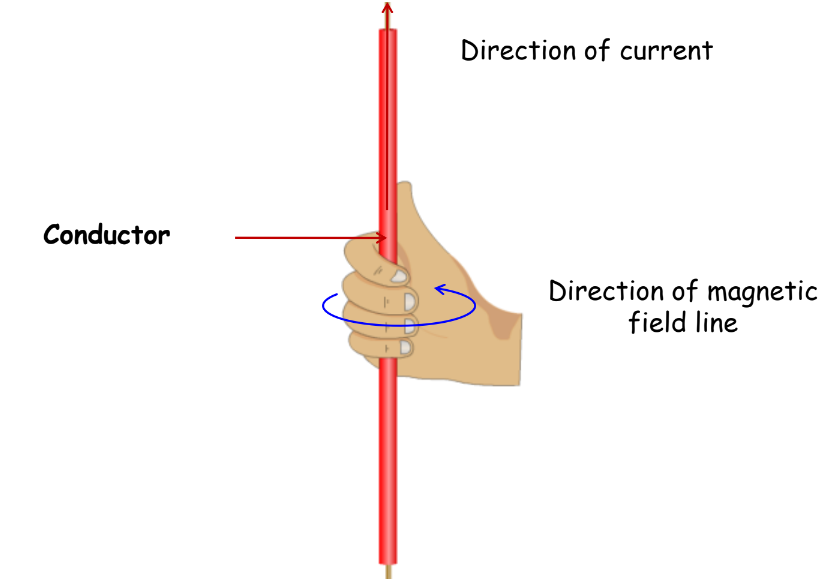
Magnetic Field Due to a Current Through a Circular Loop
When electric current flows through a circular loop, a magnetic field is created, which is more concentrated at the center of the loop than outside it. The magnetic field’s strength increases with:
- The number of turns in the coil.
- The current flows through the coil.
- Decreasing the radius of the coil.
Magnetic Field in a Solenoid
A solenoid is a coil of insulated wire wound into a cylindrical shape. When current flows through a solenoid, it behaves like a magnet, producing a magnetic field with parallel straight lines inside it. The strength of this magnetic field depends on:
- The amount of current passing through the solenoid.
- The number of turns in the solenoid.
- The nature of the core material used.
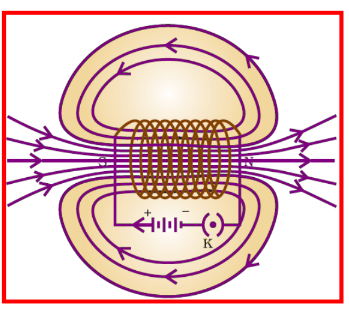
Force on a Current-Carrying Conductor in a Magnetic Field
A current-carrying conductor placed in a magnetic field experiences a force perpendicular to both the conductor’s length and the magnetic field. This force causes the conductor to move, and reversing the current or the magnetic field direction will reverse the direction of the force.
Fleming’s Left-Hand Rule
Fleming’s Left Hand Rule helps determine the direction of the motion of a conductor in a magnetic field. According to this rule:
- First Finger: Points in the direction of the magnetic field.
- Second Finger: Points in the direction of the current.
- Thumb: Points in the direction of the force (motion) experienced by the conductor.
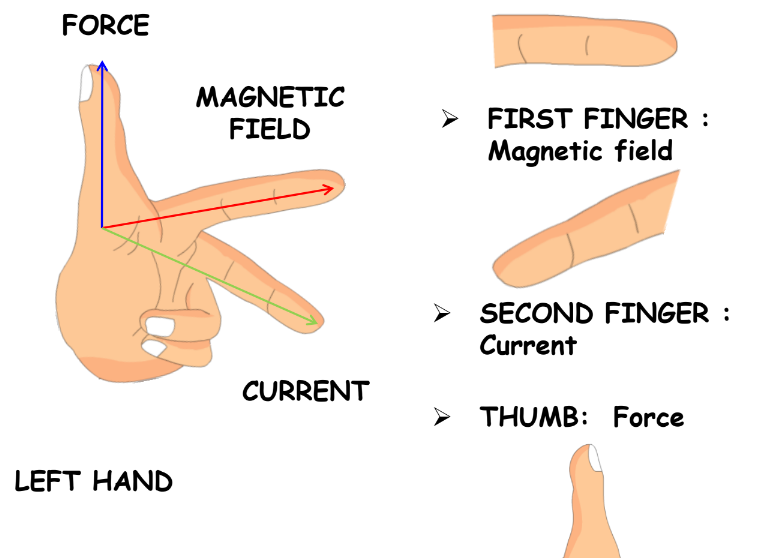
Electric Motor
An electric motor converts electrical energy into mechanical energy and is commonly used in devices such as electric fans, refrigerators, and mixers. It consists of an armature, magnets, brushes, split rings, and a battery. When current flows through the motor, the armature rotates, converting electrical energy into mechanical motion.
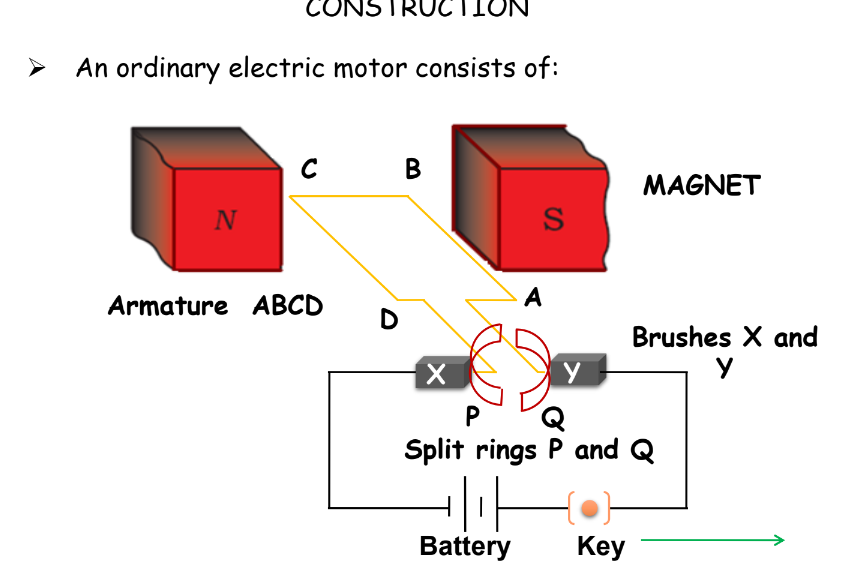
Working:
- When the key is on, the current will flow through the circuit and the armature will rotate.
- The rotation of the armature will in turn rotate the split rings.
- Any rotating body is attached to the split ring.
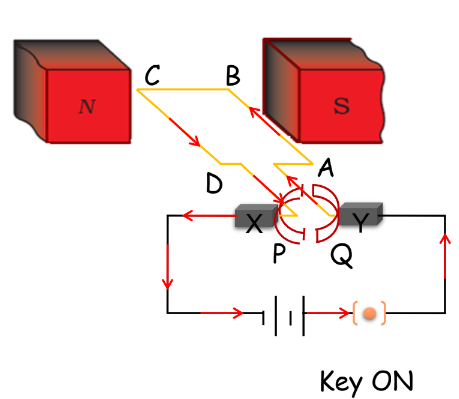
Electromagnetic Induction
Based on the definition given in the chapter Magnetic Effects of Electric Current, Electromagnetic induction is the process by which a changing magnetic field induces current in a conductor. This phenomenon can be observed when there is relative motion between a magnet and a coil or when a coil experiences a changing magnetic field.

Fleming’s Right Hand Rule
In electromagnetic induction, as mentioned in the chapter Magnetic Effects of Electric Current, Fleming’s Right Hand Rule is used to determine the direction of the induced current. In this rule:
- Thumb: Represents the motion of the conductor.
- First Finger: Represents the direction of the magnetic field.
- Second Finger: Represents the direction of the induced current.
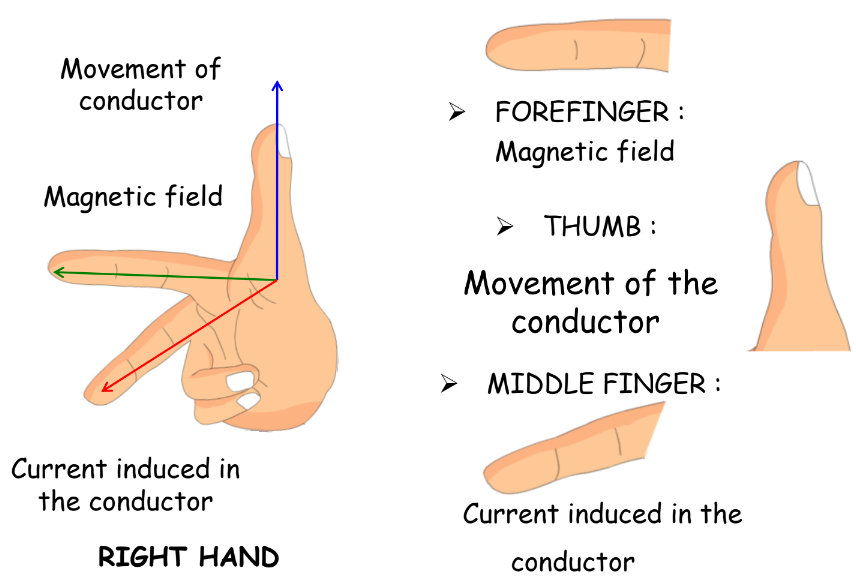
Electric Generator
As per the chapter Magnetic Effects of Electric Current, An electric generator converts mechanical energy into electrical energy using the principle of electromagnetic induction. The armature of the generator rotates, inducing current, which then flows through an external circuit.

Working:
- The armature is rotated by some external means, along with the rings.
- Because of electromagnetic induction, the current gets induced in the armature and flows through the circuit.
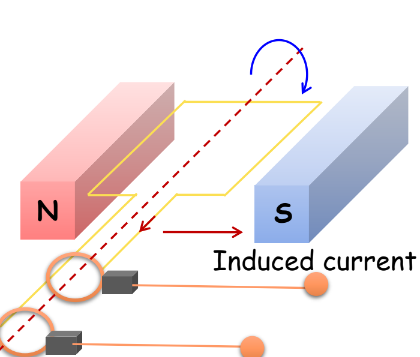
Domestic Electric Circuit
As stated in the chapter Magnetic Effects of Electric Current, A typical domestic electric circuit consists of three wires:
- Live Wire (Red): Carries the current.
- Neutral Wire (Black): Completes the circuit.
- Earth Wire (Green): Provides safety by grounding the circuit.
The potential difference between the live and neutral wires is 220V, and the earth wire is connected to a metallic plate buried deep in the ground.
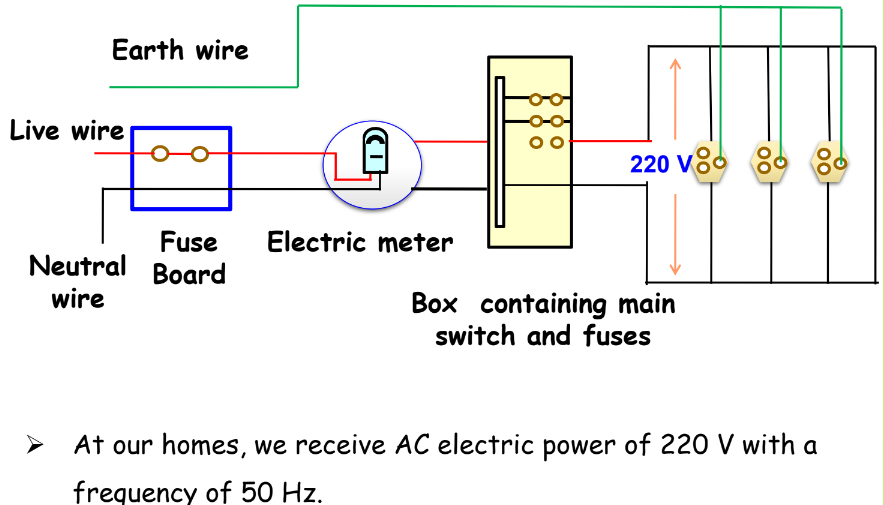
Short-Circuiting and Overloading
- Short-circuiting: Occurs when the live wire comes into direct contact with the neutral wire.
- Overloading: This happens when there is an abrupt increase in current in the circuit.
Electric Fuse
As per the definition given in the chapter Magnetic effects of electric current, An electric fuse is a safety device that protects an electric circuit from short-circuiting or overloading. It is made of a wire with a low melting point, which melts and breaks the circuit when excessive current flows through it.
Overall, we have now covered all the key concepts and phenomena related to the magnetic effects of electric current, as outlined in Chapter 12 of the Class 10 Science curriculum. Understanding these principles is crucial for grasping the fundamentals of electromagnetism and its applications in everyday life.
Let’s Conclude
In conclusion, Magnetic Effects of Electric Current is a fundamental chapter from CBSE class 10 science that lays the groundwork for understanding electromagnetism and its numerous applications in our daily lives. By exploring concepts such as magnetic fields, current-carrying conductors, and the principles governing electric motors and generators, students can appreciate the importance of electricity and magnetism in modern technology.
Through our engaging resources at iPrep, we strive to make the learning experience seamless and effective. Whether you’re preparing for exams or deepening your knowledge, mastering the Magnetic Effects of Electric Current will undoubtedly enhance your scientific understanding and pave the way for future studies in physics and engineering. Dive into this captivating chapter and discover the wonders of electromagnetism today!
Practice questions on Chapter 12 - Magnetic Effects of Electric Current
Get your free Chapter 12 - Magnetic Effects of Electric Current practice quiz of 20+ questions & detailed solutions
Practice Now








